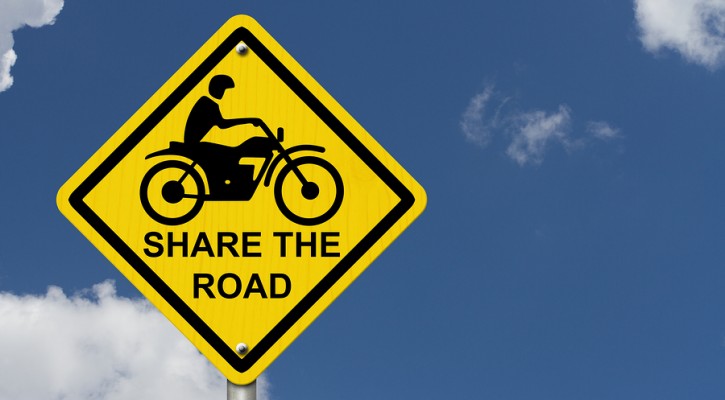
Here Comes the Sun: Summer Car Care Tips
June 7, 2014
That great ball of fire in the sky, our beloved sun, seems to be growing hotter by the day. Its awesome power can cause some serious damage to vehicles in the summer – from cracked paint to smoking engines – so it’s important to know a few basic summer car care tips.
Don’t Let Your Battery Burn Out
Extreme heat can destroy your vehicle’s battery. Hot temperatures cause battery fluid to evaporate, and that interior damage will eventually lead to a dead battery, leaving you stranded (possibly with a car full of quickly-spoiling groceries). Drivers can prevent this inconvenience by taking a few precautions:
- Keep the top of the battery clean. Dirt and dust become conductors, which drain battery power. Plus, the corrosion accumulated on battery terminals becomes an insulator, which inhibits current flow.
- Check battery fluid regularly. If you have the type of battery that needs to be topped off, check it often during these high-temperature summer days. Add distilled water when necessary.
- Test battery at every oil change. Most automotive shops and some auto parts stores have electronic testers available that can give you a snapshot of your battery’s condition.
- Replace battery on it’s way out – not after it dies. Or better yet, replace your battery every 2 – 4 years (or whenever the warranty is up) and save yourself some trouble.
Keep it Clean
Dirt, sand and debris on the surface of your car and engine can cause permanent damage. Visit the car wash often, especially after a trip to the beach. Be sure to use engine cleaner and finish with coat of wax to protect your paint from the sun, as well as repel future dirt, debris and water spots.
Park it in the Shade
This is an obvious one, however, finding that shade is sometimes very difficult. When there is no available tree cover or parking garages, you can use timing and infrastructure to find shade on the hottest of days. In the AM, drivers can find shade on the west side of taller buildings, and in the PM, the shade will be on the east side of buildings.
Windshield Cover
Using a windshield sunshade will keep your car’s interior much cooler. It also prevents deterioration of the dash board, steering wheel, center console and car seats.
Crack Your Windows
This little bit of ventilation makes a huge difference in your vehicle’s interior temperatures. Remember, cracked windows will prevent cracked car seats.
Keep these pointers in mind, and this summer won’t be too terribly rough on your ride. Knowing about summer car care tips is a good way to help your vehicle live a long and happy life.
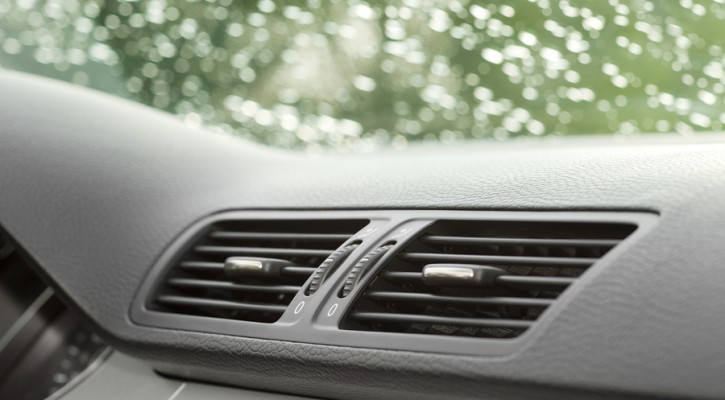
Tips To Cool Down a Hot Car Down Quickly
June 5, 2014
Driving an oven is dangerous. Follow these tips on how to cool down a hot car during the sweltering summer months:
1. Roll down all the windows. For better circulation, don’t roll them down together, but one after the other.
2. Crank up the air-conditioner. Be sure to put it on the fresh air setting, not the recirculate setting since the temperature outside will be much cooler.
3. Drive for a minute before rolling up the windows to allow all the hot air to escape.
4. Once the air from the A/C vents feels cooler than the air outside, it’s time to roll up the windows.
If your car is too hot to handle safely (the metal causes third-degree burns, the seats are melting, and the steering wheel is too hot to touch), then try this nifty trick from LifeHacker before hitting the road:
http://lifehacker.com/5823069/how-to-quickly-cool-down-your-cars-oven-like-interior
This trick from fine folks at lifehacker may look a little funny, but it’s one of the fastest ways to cool down a hot car when summer heat really gets it baking.

Emergency Braking
June 3, 2014
Most drivers never attempt to practice emergency maneuvers before they happen. However, knowing what actions to take in an unexpected situation can make a difference. This is especially true in the commercial driving industry. Whether you’re driving a company van or an 18-wheeler, it’s important to know what to do in case of an emergency, and if possible, to practice handling such a situation.
Emergency braking is one skill that many fail to master. Of course all good drivers know to how to maintain a safe following distance and to keep an eye on traffic far ahead, but sometimes that’s not enough. Pedestrians and wildlife can cross the road, or a collision can happen, or a distracted driver may cut you off and cause you to hit the brakes in a hurry.
If this happens, it’s important to know (in advance) whether your vehicle has conventional brakes or anti-lock brakes (ABS), and how to use them. Therefore, before driving any vehicle, you should check the owner’s manual to determine what type of braking system you will be dealing with.
With ABS. If you are driving a vehicle with ABS, then use this braking technique: Maintain firm and continuous pressure on the brake. Do not be alarmed by mechanical noises and/or slight pulsations.
Without ABS. If your vehicle doesn’t have ABS, then use this braking technique: Press and release the brakes repeatedly. This is called pumping the brakes, and will slow the vehicle while keeping it under control. If you simply slam on the brakes, they will lock the wheels and cause you to skid.
Knowing what type of brakes you have and how to use them can mean the difference between life and death. So be sure to check your owner’s manual and practice emergency braking techniques.

Gas Mileage Dilemma: AC and MPG
June 3, 2014
There has been a shift in the age-old debate over air-conditioning and gas mileage.
Once upon a time, drivers would roll down their windows on a hot day. They assumed that it would waste less gas than running the air conditioner. Then, one hot summer day, some “experts” told the public that driving with the windows up and the air-conditioning on would result in better gas mileage than rolling the windows down. Their argument: rolling down the windows created more drag, and that resistance used more gas than the AC.
However, it appears that this argument was based more on theory than fact (or possibly they were just sick of being hot). Years of testing by actual drivers, as well as studies done by Edmunds.com, the Society of Automotive Engineers (SAE), and Consumer Reports revealed that gas mileage is actually better with the windows down and the AC off. And so, the debate over AC and MPG wages on.
Of course, this doesn’t mean that you have to suffer through the heat wave without any air-conditioning. It would definitely be less cost efficient to have a heat stroke and crash your car than to simply turn on the AC every once in a while. However, if you want to get the most out of your gas mileage then consider cruising with the windows down and dressing for the weather.
For more information on air-conditioning and gas mileage, see the full story below:
http://greenliving.about.com/od/travelinggreen/a/Air-Conditioning-MPG-Gas-Mileage.htm
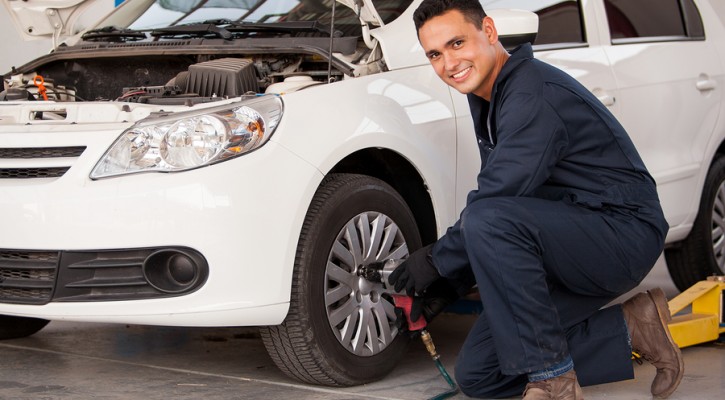
Tire Safety 101
June 2, 2014
It’s National Tire Safety Week all week long, so today we’re going to break down the basics of tire safety for your cars and trucks.
Tires keep us moving, help us stop, maintain traction and play one of the most important roles in keeping control over our vehicles. Without reliable, properly-inflated tires, cars and trucks can quickly turn into rolling death machines. And, even a slight drop in tire pressure can really drag our gas mileage down. So, it’s important to get in the habit of practicing proper tire safety.
1. Check tire pressure AT LEAST once a month.
Tires typically drop about 1 psi per month, and 1 psi for each 8-degree loss in ambient temperature. In many places across the U.S., temperatures can range far greater than 8-degrees in a single day. So, if your region is experiencing drastic temperature changes, it couldn’t hurt to check tire pressure weekly or even daily.
Uneven tire pressure immediately affects handling and control, as well as gas mileage. However, the long term effects can be even more concerning. Tire life decreases with poorly inflated tires because the tread wears out quicker on the outer edges, as well as increases stress on the tire as a whole through flexing and overheating.
2. Inspect tires AT LEAST once a month.
This is easy. Just do a quick walk-around, looking for excessive tread wear, cracks, bumps, chunking, punctures, or debris (such as screws & rocks). If you notice excessive tread wear, it could be a sign of steering or suspension misalignment.
If you notice tire damage, it is easy & cheap to take it in for repairs.
3. Maintain tires in proper balance.
Ever hear a thumping noise when driving down the highway? It could be an out-of-balance tire. This can cause uneven tread damage as well as an uncomfortable and embarrassing ride. If this occurs, have your tires dynamically balanced by an experienced technician right away.
Tires should always be balanced when first installed, and whenever remounted.
4. Rotate tires every 6,000 miles.
This is a general rule of thumb, though different vehicle manuals may specify different miles.
5. Maintain steering and suspension in proper alignment.
Many tire service shops offer a free alignment with the purchase of new tires. This is important because misalignment can cause rapid tire wear, as well as affect steering and stability of the vehicle. If you notice that your car pulls to one direction or the other, it may be time for an alignment.
6. Never overload your vehicle.
Overloading is the second leading cause of tire failure, just behind underinflation. Check the tire sidewall for maximum load range.
7. Don’t overheat tires.
Heat is another big tire killer. High speeds, high loads, underinflation, course pavement and aggressive driving all increase tire temperatures. This drastically decreases tread life and damages tire structure.
8. Install tires in matched pairs or complete sets.
When replacing tires, buy the same size, brand and type. If you can’t afford a complete set, then try to at least get a pair and install together as rear wheels. Even if the vehicle is FWD or AWD, putting new tires on the front and worn tires on the back will cause instability.
9. Buy the right tires for your vehicle and location.
All-season tires may work well in various locations, however, specialized tires will perform better for driving in rain, snow, ice, off-road and long distance conditions.
10. Replace tires BEFORE they blowout.
If tire tread is running low, it’s time for the old penny test. The Lincoln’s head on a penny can be substituted for a tire tread depth gauge as tires wear to the critical final stages. Place a penny into several tread grooves across the tire. If part of Lincoln’s head is always covered by the tread, you have more than 2/32″ of tread depth remaining. If Lincoln’s head is not covered, then a blowout is imminent.
Now that you know a thing or two about tires, practice the wisdom, spread the wisdom, and be a knowledgeable tire-safety advocate.
Medical Examinations
May 29, 2014
Besides the studying, the CDL test, the training and the job search, truck drivers must also pass a medical exam. However, due to a shortage of qualified medical examiners, this year may prove especially difficult. See the full story here:
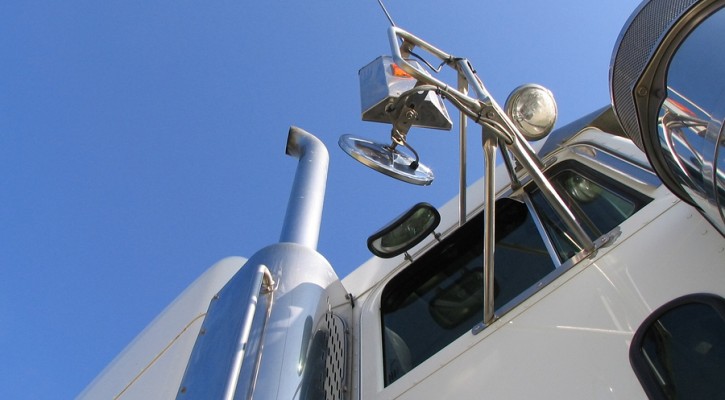
How to Succeed in the Trucking Industry
May 28, 2014
Becoming a trucker is far more complicated than simply passing a written test. The trucking industry requires a strong mind, an ability to get along with people, as well as an ability to get along without anyone at all. There are many obstacles that rookie drivers must face. Increase your chances of success by reading this excellent post over at TruckingTruth.com:
http://www.truckingtruth.com/trucking_blogs/Article-3697/why-many-rookie-truck-drivers-fail
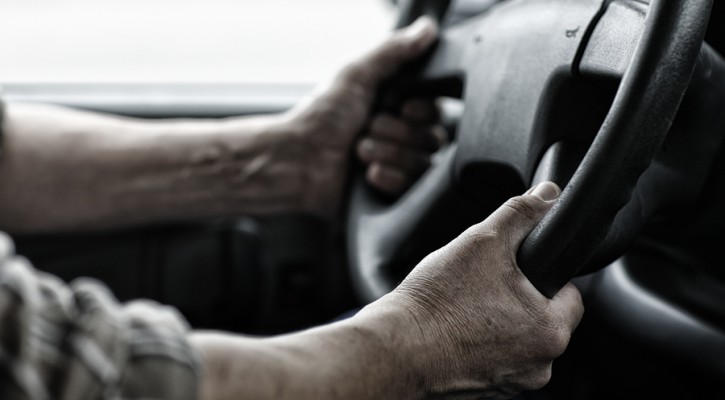
Highway Angel
May 27, 2014
The story of how Robert Tyler became a Highway Angel
This week, we have the honor of spreading the word about this life-saving trucker. Long time driving veteran Robert Tyler earned the certificate, patch, and pin of a TCA Highway Angel when his quick-thinking actions saved one driver’s life, and possibly prevented further traffic injuries.
After pulling up next to a vehicle blocking traffic, Tyler noticed that the driver had collapsed over the console, convulsing and struggling to breathe. Since the driver’s foot was on the brake pedal, Tyler pulled his truck in front of the car to prevent the vehicle from rolling into the nearby intersection. He then pulled the man out, and with the help of a nurse who had stopped, administered CPR until an ambulance arrived.
Truck drivers have a rough job. Our everyday lives depend on their work, and every once in a while, they play a crucial role in the saving of lives. So, keep this amazing story in your memory banks as a fine example of drivers in the trucking industry.
See the full story here:
http://www.thetruckersreport.com/quick-thinking-driver-saves-mans-life/
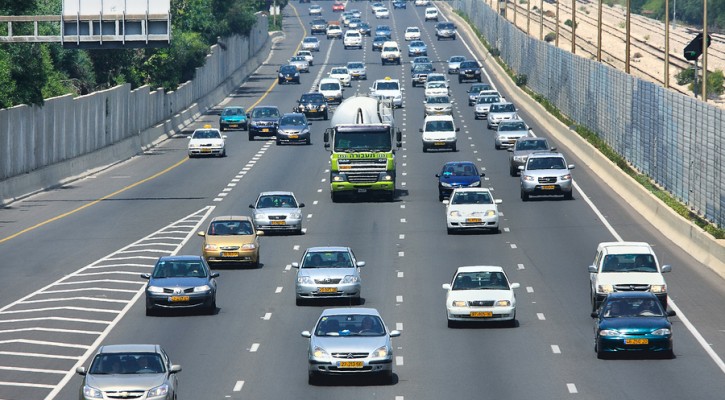
Motorcycle Awareness for the Clueless – Lesson 13
May 26, 2014
Lesson 13: Save Lives by Keeping the Roads Clean
Road debris is no big deal for people in cars and trucks, but it can result in a fatal crash when faced by unsuspecting bikers. Trash, gravel, and other common hazards can often be prevented by drivers who strive to keep the roads clean. So, take these tips to heart to save lives this riding season.
Keep gravel off the road by keeping your tires on the asphalt. Drifting into the shoulder can cause your tires to kick up gravel on the pavement, which can then cause traction issues for motorcyclists.
When hauling trash, yard trimmings or any household goods, be sure that everything is strapped down securely. Keep an eye on your load while driving to make sure that nothing comes loose during the move. A fallen cedar branch or lost bedside table could prove fatal for any bikers behind you.
Finally, drivers can keep the roads clean by following this age-old rule: DON’T BE A LITTERBUG! Keep your food, drinks, cigarette butts and other trash in the car until you reach a destination with a trash can.

